Hit Solid Wedge Shots by Fixing Common Errors
Don’t Know How to Hit Solid Wedge Shots? The First Step is to Eliminate These Common Amateur Mistakes from Your Game.
Want to know how to hit wedges?
If your wedge shots aren’t as accurate or consistent as you want them to be, the solution is probably much easier than you think.
In my twenty-plus years of teaching golf, I’ve seen it proven time and again:
The biggest mistake most amateur golfers make with their wedges is hitting the ball too high.
It’s true. You can see remarkable improvement in your wedge shots just by learning how to control your shot trajectory. And I’m going to explain exactly how you can do that by improving your setup and swing technique.
Let’s get started.
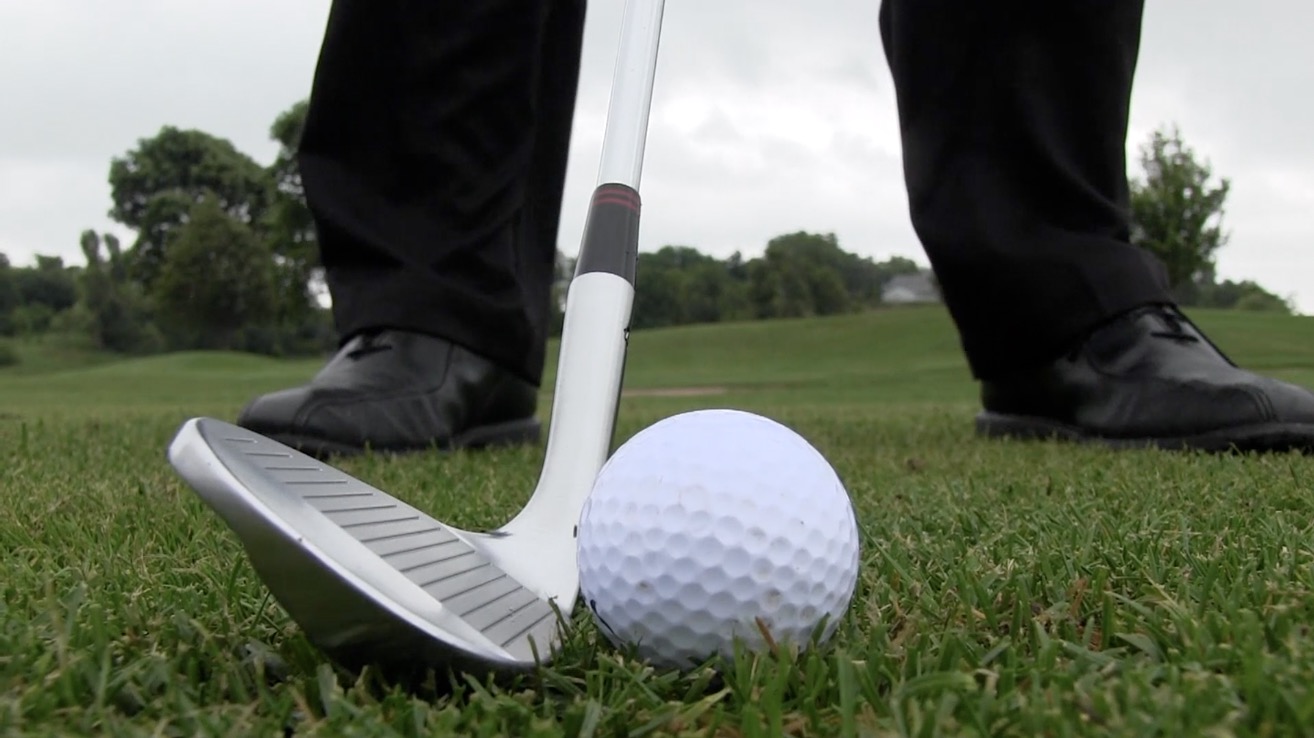
How to Hit Wedges: Key Points
- Get to know the purpose of each wedge in your bag so you can choose the right club for the situation. Higher lofted wedges like a lob wedge will produce more height and less distance while lower lofted wedges like a pitching wedge will produce less height but more distance.
- Use your regular grip for wedge shots.
- Take your stance with your feet shoulder-width apart, toes flared, and about 65% of your weight on the lead foot.
- Position the ball slightly back from the center of your stance.
- Don’t use a full swing for wedge shots; adjust your swing for the distance you want the ball to travel. We will cover this in more detail later.
- Learn how to hit a high flop shot and a basic chip shot. It’ll make a huge difference in your game.
What Makes a Good Player?
Great wedge players have complete control over the distance and trajectory of their golf ball.
Have you ever seen a PGA professional like Jordan Spieth hit a wedge shot?
Whether he is using a lob wedge or a pitching wedge, he lowers the ball flight by making a controlled ¾ length swing and decreasing his swing speed. This allows Spieth to control the distance of his shot.
It’s also much easier for him to connect with the sweet spot on the golf club.
Now, tour professionals become good wedge players by having constant golf instruction. This has allowed them to master the keys to good wedge play swing mechanics. Not to mention, they’ve spent hours hitting wedge shots.
However, there are a few things nearly every professional golfer and instructor does that you can do, too.
Quick Tips for Becoming a Better Wedge Player
- Make sure the grooves on your lob wedge, sand wedge, and pitching wedge are clean.
- Work on your pitch shots around the green. This will help with feel and touch.
- Your backswing should not be too long. Partial wedge shots are easier to control and typically have less trajectory.
- Work to master many different wedge shots of low, high, and medium trajectory
- Use a full swing with your pitching wedge only—not with any other wedges. You’ll learn why in a bit.
Example of Good Wedge Play
Now let’s run over a scenario where a good wedge player would show their skills:
They approach a par 4 and stripe their tee shot down the middle of the fairway. Their second shot is 110 yards from the flag, but their approach shot is into the wind.
They then take out their pitching wedge and hit a low-flighted, partial wedge shot that ends up 10 feet from the hole.
In regular conditions, they could hit their full pitching wedge around 130 yards. But by reducing swing speed and lowering trajectory, they can maximize their precision.
The average amateur would use their 110-yard club and try to hit a full-speed shot, which increases the spin rate and causes the ball to rise. Even if the golf club hits the ball in the sweet spot perfectly, this shot will likely fall short.
How to Select the Right Club for Wedge Shots
When a player asks me how to hit solid wedge shots, I usually start by telling them to select the right club.
I know—that seems a little basic . . . maybe even so obvious it doesn’t need to be said.
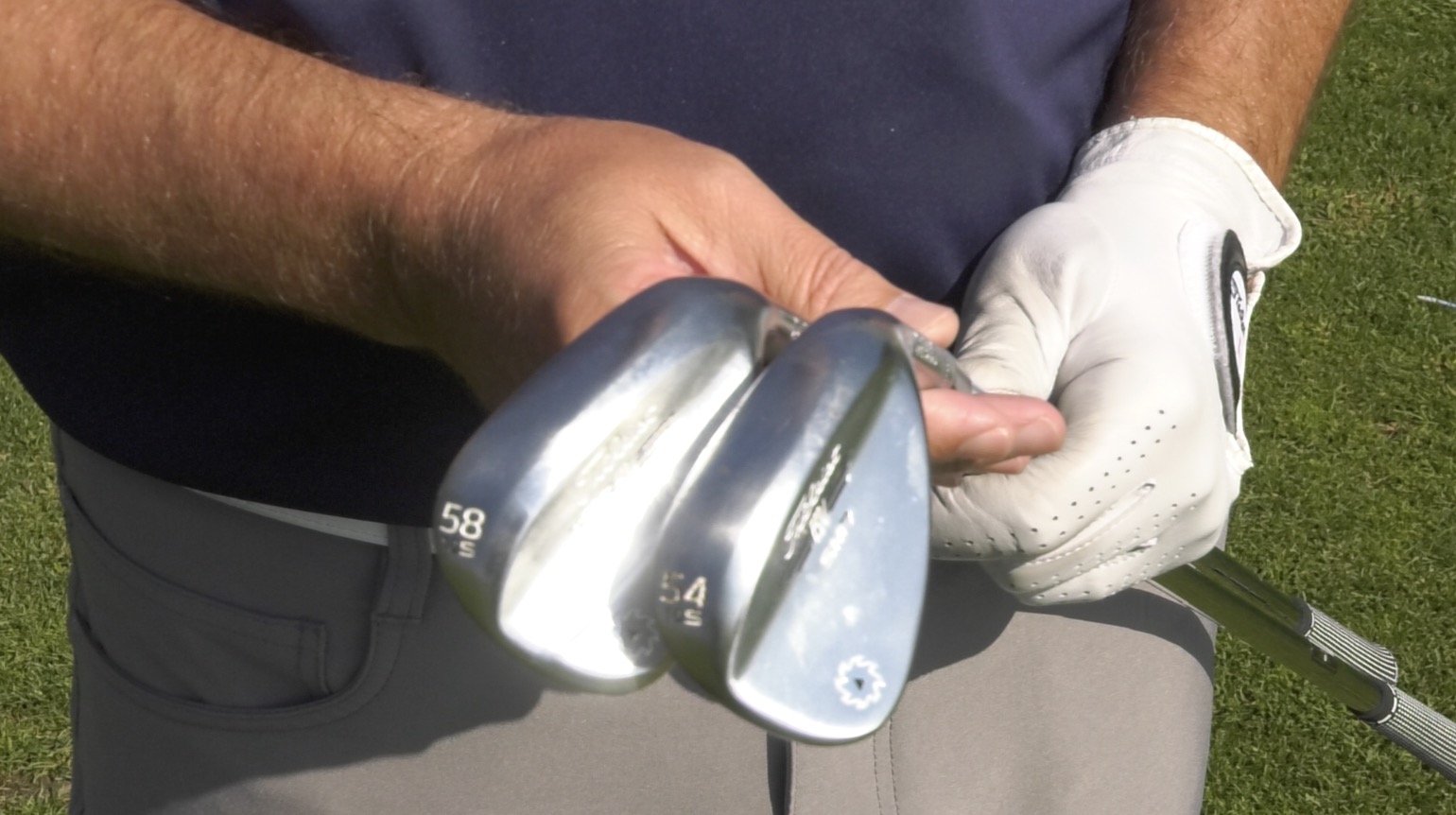
But here I am saying it, because it’s a mistake I see all the time. When most amateur players get ready to hit a wedge shot, they reach for the most lofted club in their bag—usually something around 58 degrees.
Then they make a full swing at maximum speed. Here’s the problem with that:
A lot of loft + a lot of speed = a lot of height
Hitting a high-lofted wedge at full speed is going to heighten the trajectory of your ball flight, making it difficult to control ball spin and distance.
My advice is to start pulling out a wedge with a lower loft. Try something around 54 degrees. You’ll find that the trajectory comes down, helping you improve accuracy and distance control.
Types of Golf Wedges
Each of the wedges in your golf bag are designed to fill specific purposes. The more you understand about these clubs, the better equipped you are to choose the right one for the given situation.
Here’s a quick rundown of your three wedges and how to use them:
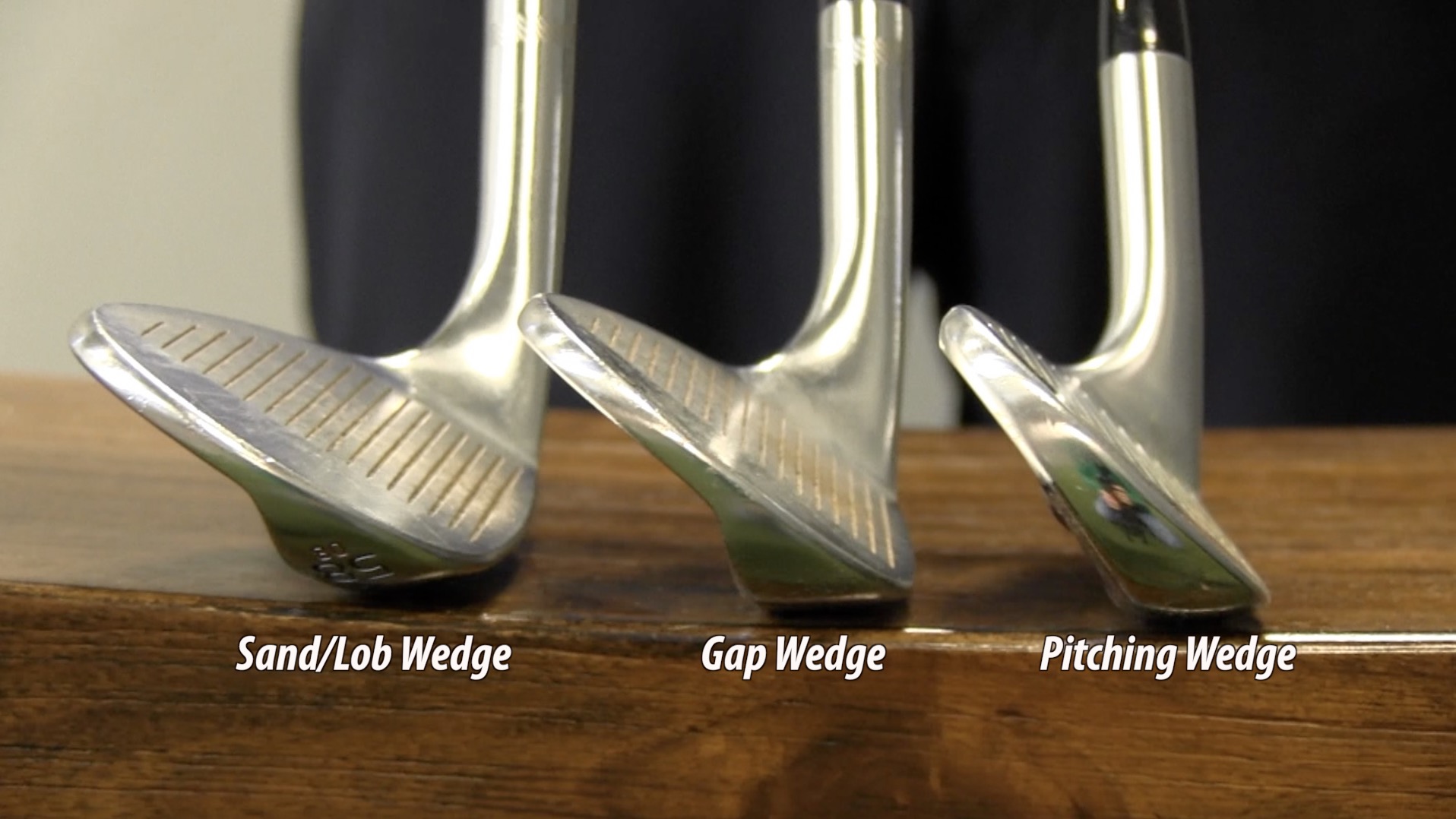
When to Use a Lob Wedge
Your lob wedge is your most lofted club, meaning it is the best option when you need to get the golf ball up in the air fast.
For example, a great opportunity to use your lob wedge on the golf course is when you’re off the putting green and chipping from the rough and there’s not a lot of distance between you and the hole.
This is the optimal time to hit a high and soft golf shot that lands softly and rolls up next to the hole.
Another great opportunity to use a lob wedge is when you are in a greenside bunker.
Once again, you would generally be in a position where you do not have a lot of green between you and the hole. This would be a perfect time to hit a high backspin pitch shot with your lob wedge.
When to Use a Sand Wedge (Gap Wedge)
The sand wedge (54 degrees) is great around the green and is the most versatile of all the wedges. It has just enough loft to get the ball up in the air without sacrificing distance.
It’s a great wedge to use for shots 30-60 hards from the green when the ball is in the fairway.
When to Use a Pitching Wedge
Your pitching wedge has the least amount of loft out of all of your wedges and can be used in a number of ways.
Firstly, it can be used to hit a golf ball an average distance between 90 and 130 yards (depending on how far you hit the ball).
Secondly, it can be used to hit a chip shot around the green that has little backspin and rolls out almost like a putt. This is a good option when there is a lot of green between your golf ball and the cup.
As previously explained, all of your wedges can be used for regular golf shots as well as when you are chipping around the green. Knowing when to use your specific wedges can dramatically help your golf game.
When Not to Use a Wedge
When presented with a ball that is on the fringe or just off the green, most players would choose to hit a chip shot using one of their wedges
In fact, the best option is usually to putt the ball rather than chip it. The phrase that I use with my students is “your worst putt is always better than your worst chip.”
When hitting a chip shot, the golfer could skull it over the green or hit a fat shot. The golfer could also misjudge the length of their backswing and the backspin put on the ball.
On the other hand, a poorly judged putt is likely to still be on the green.
Of course, good wedge players can control the trajectory and distance of their shot. However, they also know when to use certain wedges and when to not use a wedge at all. Having this skill can make your golf game improve rapidly.
What’s the Correct Grip for Wedge Shots?
All great golf shots begin with proper grip. Here’s how to execute the perfect grip for wedge shots:
- Place the club in your hands similar to all full swing shots.
- Be sure to grip the club in your fingers, not in your palm. If you’re not familiar with this concept, learn the 45-degree grip process here.
- Move your hands down the club roughly 1 inch from the top of the grip.
Proper Stance for Wedge Shots
When you set up for wedges, look for these important checkpoints in your stance:
- Get 65% of your weight on your lead foot.
- Position your feet slightly less than shoulder width apart.
- Flare your toes.
What is the Best Ball Position for Wedges?
Optimizing your ball position is often the greatest and simplest change you can make to improve any shot.
Now, for a lower lofted club like a 9- or 8-iron, you want to position the ball in the center of your stance.
However, when you’re preparing to make a golf wedge shot, your best bet is to:
- Position the ball slightly back of center. Straight out from the buttons on your golf shirt is a good reference point.
- Move your hands forward so they are slightly in front of the ball.
When you move your hands forward, you create a position where the shaft is leaning towards the target. This position takes a little bit of loft off the club and helps bring the trajectory down.
The weight on your feet should also be slightly forward and onto your lead foot. Shoot to get at least 65% of your weight on the lead foot.

What’s the Best Swing Technique for Wedges?
When you increase your clubhead speed—all things being equal—you get more height. This is especially true when hitting clubs with high lofts like a wedge.
In order to get a steady, controlled golf wedge shot, bring that swing speed down just a bit.
Just as important, look at shortening the length of your swing. We don’t think about length as often as speed, but this is a key component in bringing that trajectory down when you’re hitting your wedge.
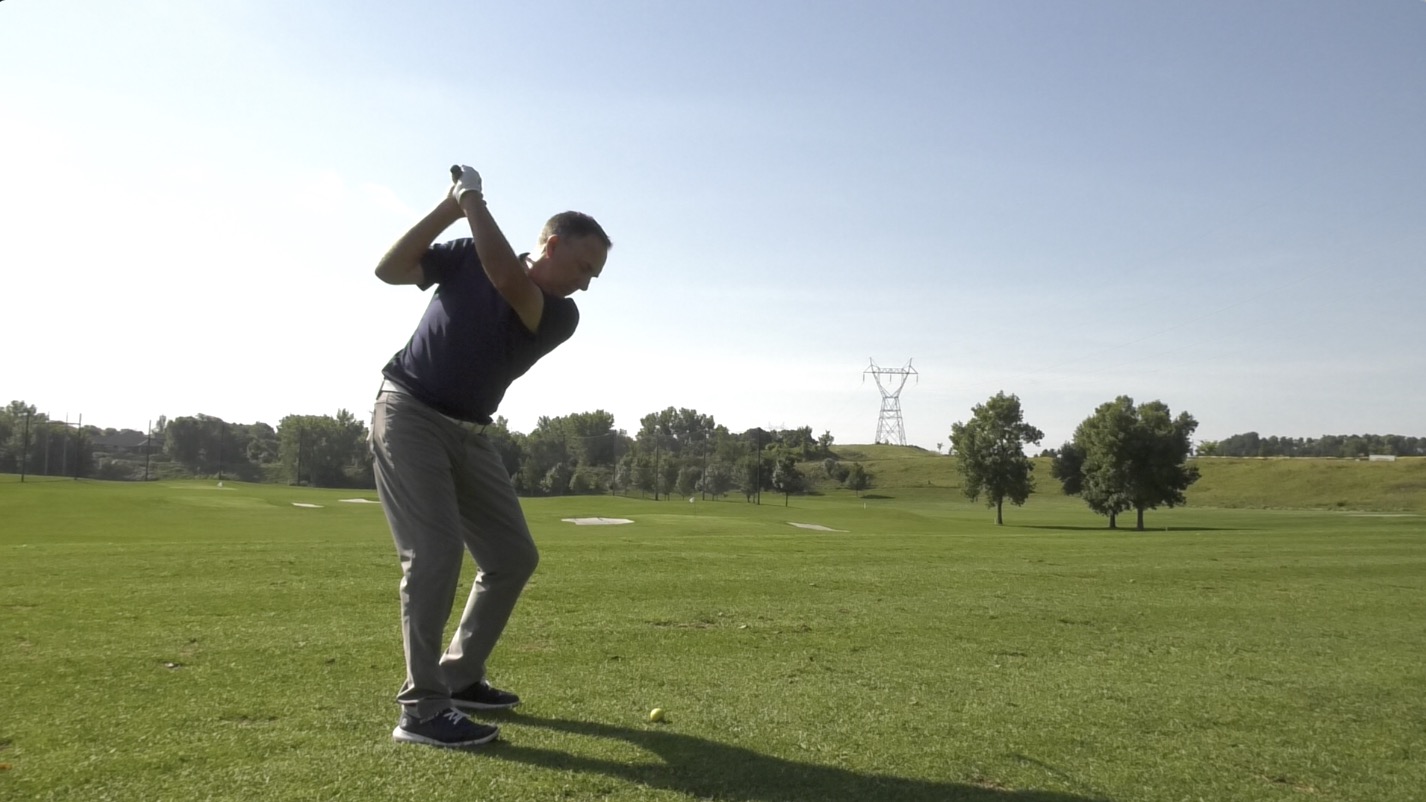
Many amateur golfers use the same swing length with their wedges that they use with their driver. As a result, the ball pops way up into the air, compromising accuracy and distance control.
So then, what’s the correct swing length for golf wedge shots?
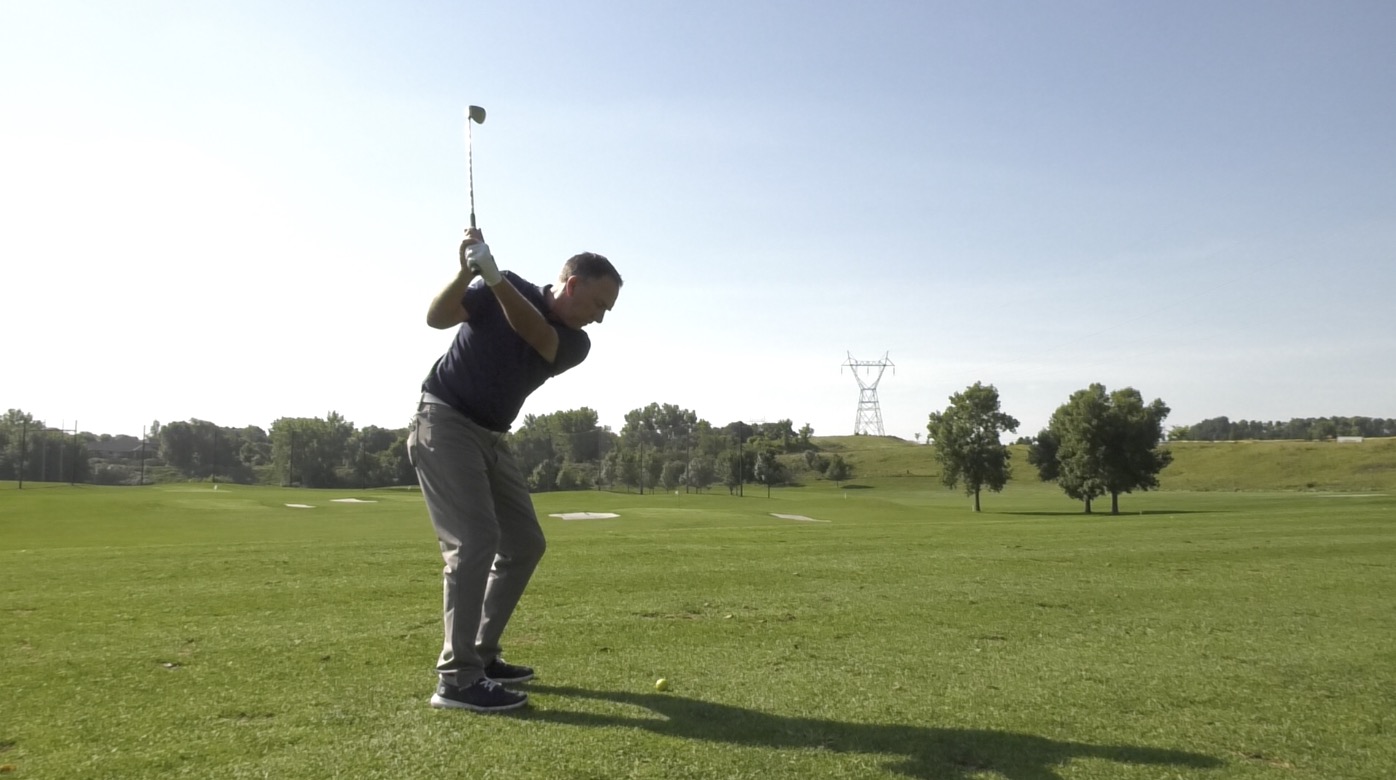
Let’s look at it like a clock. When you take a full swing, your hands typically go all the way back to an 11:00 or 11:30 position.
For wedge shots, however, you should only hit about the 10:00 position at the top of your swing. That shorter swing length helps you hit a low, steady controlled shot.
If you could use a little extra help perfecting your technique for wedges, I highly recommend the Vertical Line Swing Stacker. This training aid is a game-changer.
Distance Control for Wedges
When it comes to wedge play, distance control is the skill separating average golfers from excellent golfers. So what can you do to join the ranks of the truly excellent?
The trick is to find three different lengths in your backswing and select the one you need based on the distance of your shot.
- For shorter shots: Only bring your hands about hip-high in your backswing.
- For medium shots: Take your lead arm chest-high in your backswing so it’s even with the buttons on your golf shirt.
- For longer shots: Let your lead arm go all the way to shoulder height on the backswing.
For all three shots, follow your backswing with a full, rhythmic finish.
How to Hit a Flop Shot
Very few things in this game feel as good as hitting a nice soft flop shot. And while this move feels like a high-level skill, it’s actually not that hard to pull off with the right technique.
Here’s how it’s done:
- Ball position: Position the ball slightly forward of the center of your heels. A good reference point is straight out from the logo on a golf shirt.
- Feet: A wide stance with the toes flared out will help with stability.
- Weight: Get 70% of your weight onto the lead leg and keep it there throughout the motion.
- Shaft position: Position the grip end of the club equal with the ball. A good reference point is to have the shaft pointing at our belt buckle.
- Clubface: Rotate the face open 10 to 20 degrees. This will add loft to the club and give the shot more height.
- Motion: Make a nice long slow swing letting the clubhead slide under the ball through impact.
How to Hit a Basic Chip Shot
Improving your chip shots is one of the best things you can do to lower your scores. If your chipping isn’t where you want it to be, make sure you’re following these key steps:
- Ball position: Position the ball slightly back of the center of your heels. A good reference point is straight out from the buttons on a golf shirt.
- Feet: Position the feet close together with the toes flared slightly.
- Weight: Get 65% of your weight on your lead foot.
- Shaft position: Position the grip end of the club ever so slightly in front of the ball.
- Clubface: Rotate the face 5 to 10 degrees open.
- Motion: Rotate the arms and shoulders back and through similar to a putting motion.
How to Hit Solid Wedge Shots: The Short Version
So let’s sum up.
The next time you’re on the course preparing to hit a wedge shot, you’re going to:
- Think about the club you’re using and select a wedge with a lower loft.
- Position the ball a little farther back in your stance—just behind center—and make sure there’s a little forward lean on the shaft at setup.
- Focus on shaping your swing motion so it’s about ¾ the length of your regular full swing.
- Your final swing thought should be making your best possible swing and trying to strike the ball in the center of the club face.
Make these simple changes and I promise you:
Your trajectory will come down, your speed will come down, and your ball will finish closer to the flag for shorter putts on the green . . . and fewer strokes between you and the cup.
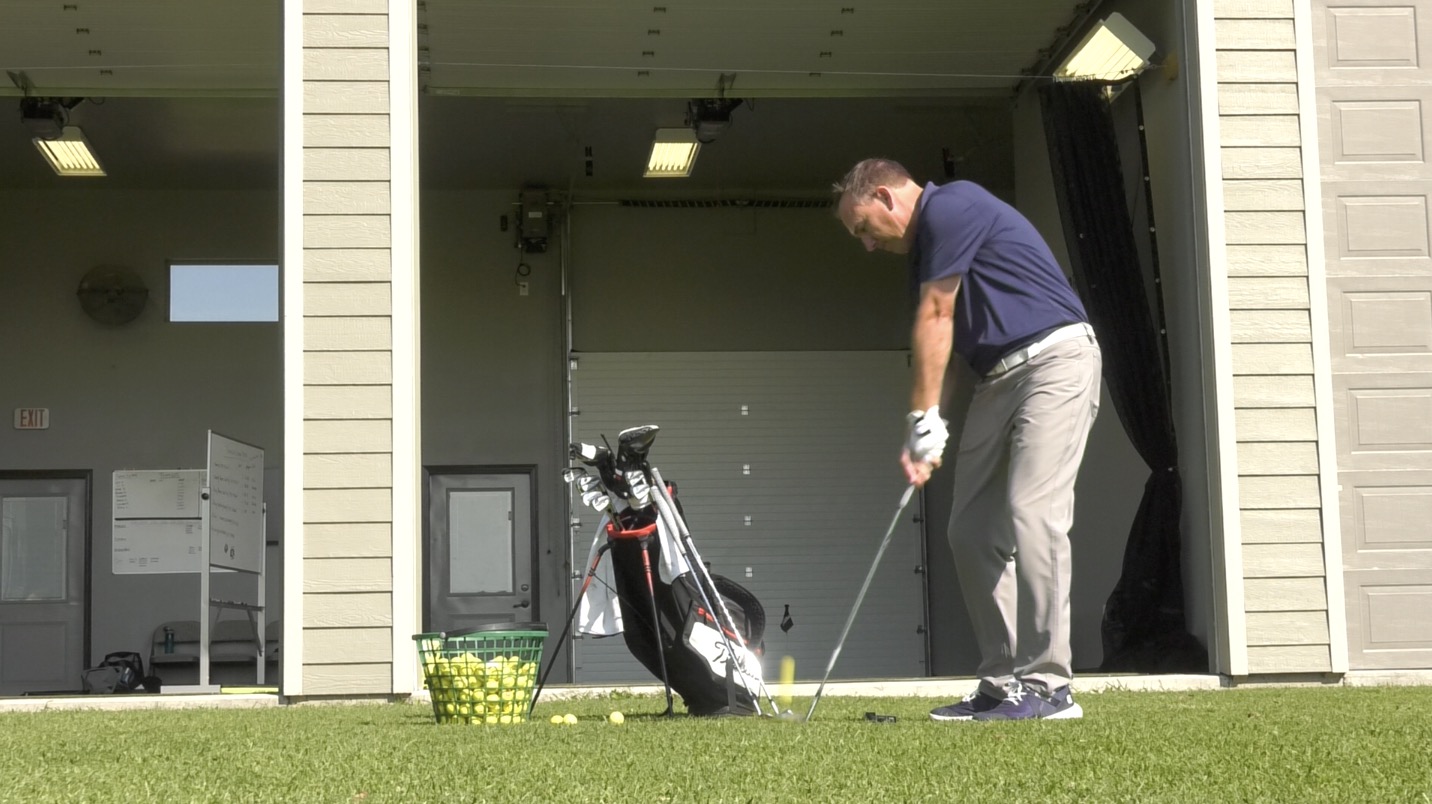
FAQs on Hitting Wedges
Why is it so hard to control my distance when I’m hitting wedges?
You might be using a full swing and too much clubhead speed. Most amateur golfers make this mistake. Try slowing it down a little and using a ¾ swing motion—shoulder height to shoulder height.
How do I know which wedge to use?
Consider the amount of loft built into each wedge. A higher lofted club will get you more height with less distance. A lower lofted club gets you more distance and less height.
How important is it to learn how to hit wedges?
It’s pretty important! The better you get at delivering the ball to the green and close to the hole, the more you’ll see your scores go down.
Next Steps
If you’re ready to take your wedge practice to the next level…
- Learn how to hit a bump and run.
- Discover two common mistakes that cause amateur golfers to shank their chip shots.
- Check out this versatile training aid that’s guaranteed to help you refine your wedge shots (among others).
And don’t forget to share your thoughts in the comments below!
Do you feel like you have a better understanding of how to hit solid wedge shots? Have you been making any of these mistakes? Do you have a difference of opinion or some tips of your own to share?
Let us know what’s on your mind. We think of ourselves as a community here at USGolfTV, and we (and your fellow golfers!) want to know what you think.
And be sure to follow us Facebook, Twitter and Instagram for product reviews, golf tips, and information on new brands. For helpful video tips, subscribe to our YouTube channel!
And if you’re really ready to take your golf game to the next level, you’ve got to learn my Counter Backswing Sequence. This is the senior golfer’s best secret for getting more speed and distance. Click this link to discover it for free.
About the Instructor
I’m PGA Teaching Professional Todd Kolb—a four-time Golf Digest Best-in-State Instructor, Amazon Best-selling Author, and Minnesota PGA Teacher of the Year. I’ve worked with students of all ages and skill levels in my 30 years of coaching, from first-timers to an LPGA major champion. I’m also the Director of Instruction for VLS Golf and USGolfTV.
My work with VLS Golf and USGolfTV revolves around helping the everyday golfer cut through overcomplicated traditional instruction to find solutions that actually work for them.


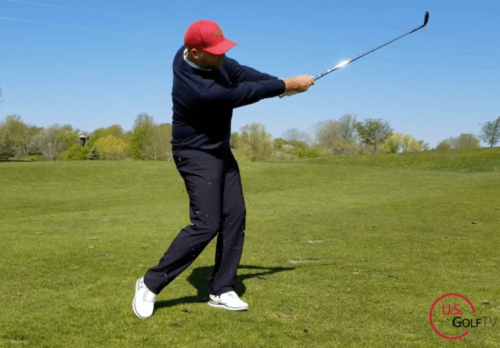
Hey Todd
I’m Edouard,i’m 12;6 handicap, and i want to tell some reactions face to the 5 videos series on shoirt game : Chipping, bunker shot, putting and pitching .
5 : Bump and run. yes i like to use my PW or 9 to let roll the ball to the hole, and it’s a good challenge to find the target (1/4 in the air, 3/4 roll) and train.
4 : Greenside bunker, i succeed 4/5 time with your suggestions (ball forwad, weight left, more loft with opened face and wrist ) so i have to train in humidity sand condition (more difficult, i’m trying to put the ball more in the middle…), and on the fairway bunker shot
3 Putting with shoulders : it’s a good challenge at the beginning, but i’ve watched all your putting videos, and all the drills like lead foot putting, or glove drill for the shoulders, or pen drill, or 60/40 weight drill, lag puts drills with 5 balls, or 60/40 length putting drill, and face control 1mm drill, all they ‘ve been helping me to decrease from 35 puts by round to 31. So i’ve to train more to improve my round scores ( 5 times +10).
2 : Chip shots : it was a renew idea,because my last coach (inline golf lesson at moncoachedegolf.com in France) suggested to put the hand forwad the ball. So it’s on going but i’haven’t already 100% success but i have to improve more and more time.
1 Pitch shots : for the suggestion to focus on the distance landing, it’s ok. For the suggestions on this video : club selection ( SW 50° and 56°), ball position, and length and speed, it’s ok. But it was very hard to undersatnd the pitching set up, same rate hand and club face, no wrist , smooth angle of attack. I haven’t got SC200 but i’m trainig with 4 distances (3/4 PW 65m 70y, 3/4 SW56° 55m 60y, 1/2 PW 45m 50y and 1/2 SW 56° 35m 40y). I have good results with the spine on the green, but i haven’t success with my 15- 25m (20 30y) longer shots.
What do you suggest ?
I have one more question about ‘One less stroke” elesson, what is exactly the format and inside components ? (video, drills, theory, golf course management , mental ?)
Sincerely
I can not get the sound to play on your videos. All others work fine.
Sorry to hear that Truman, I don’t believe we’ve ever had that issue brought to our attention before. How are you viewing the videos?
Chipping has gotten so confusing. In my younger days I chipped everything with an 8 iron and used a 58 degree wedge for sand shots and those shots that needed to be lofted over something. Since turning into my 70’s(age that is), the 8 iron doesn’t seem to work and I have tried every club in my bag to chip with….but nothing works. Somehow all this needs to be simplified. What to use and how to use it for a straight forward chip shot. Who can help.
David,
You are spot on. The golf industry has made chipping very confusing for many golfers. Take a look at these videos, they will help simplify https://youtu.be/e48zeG7d1Mk